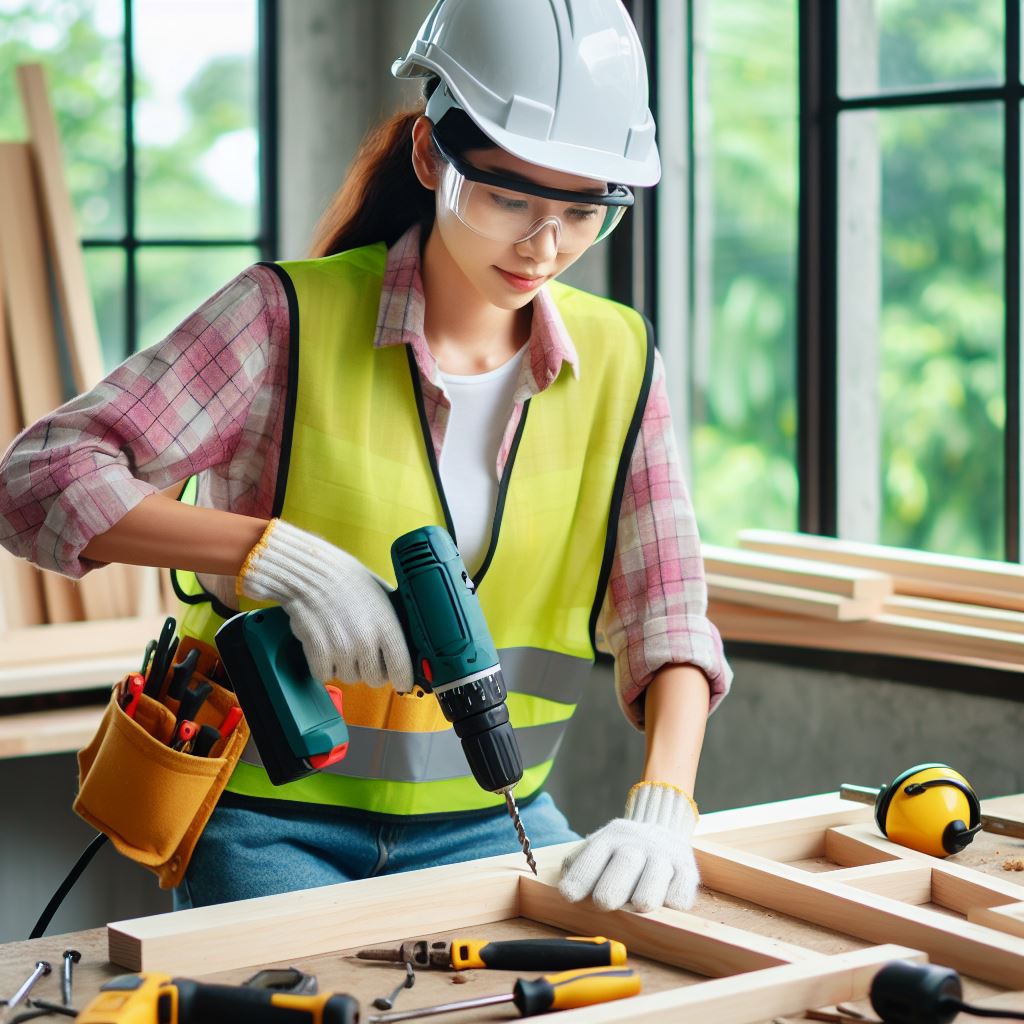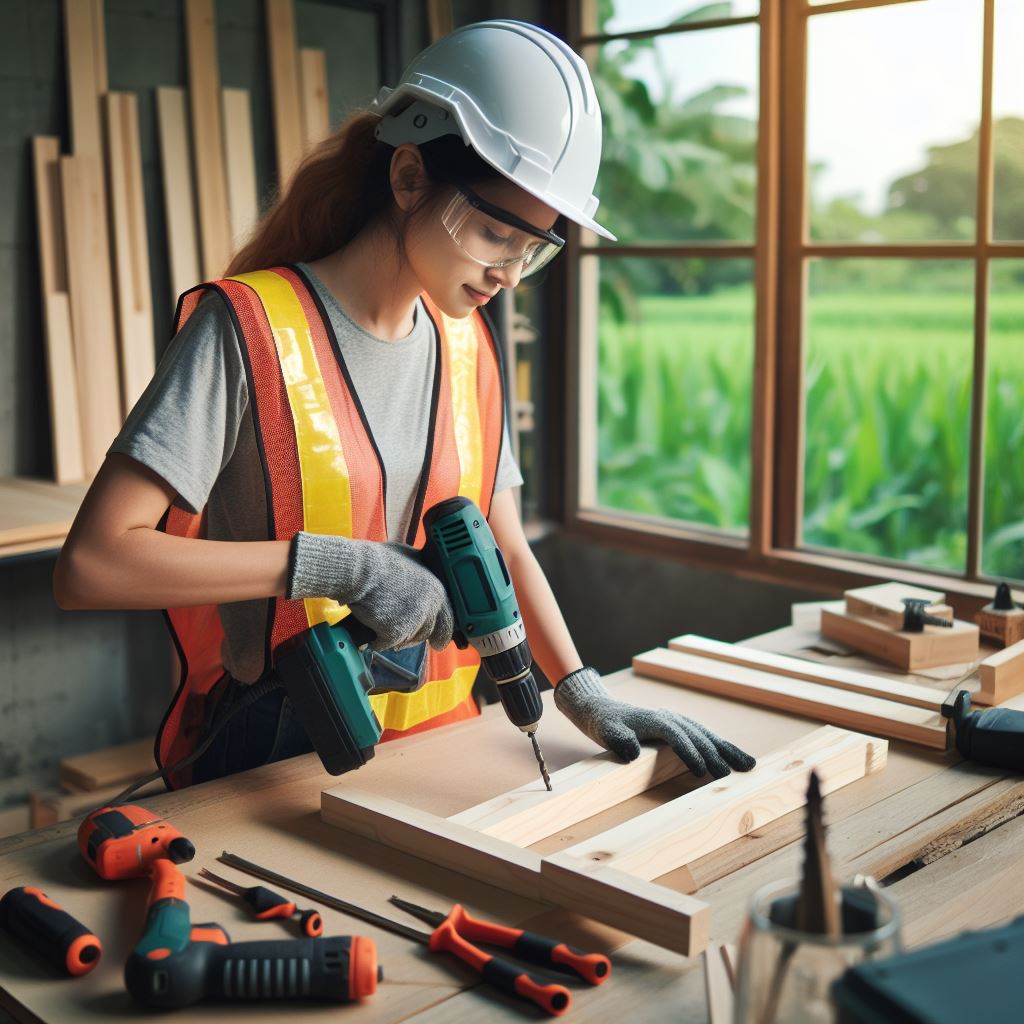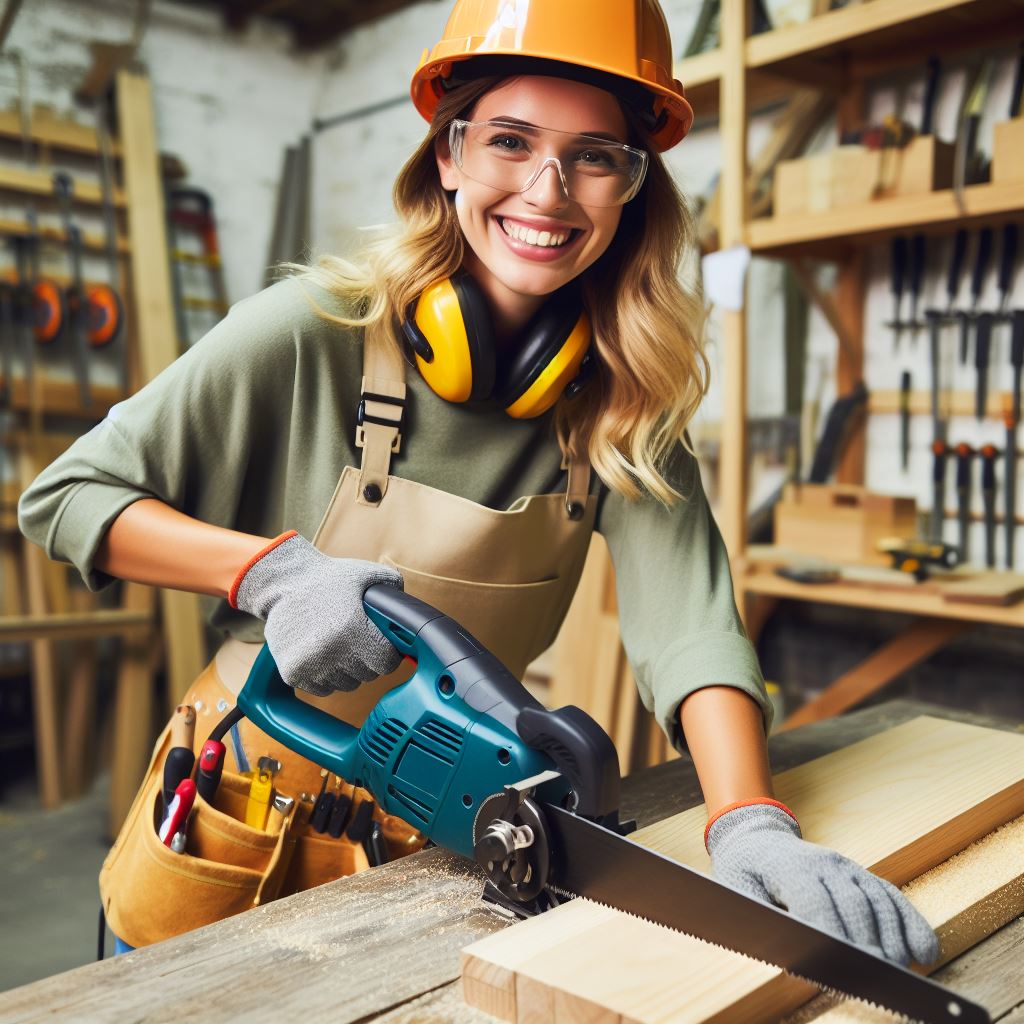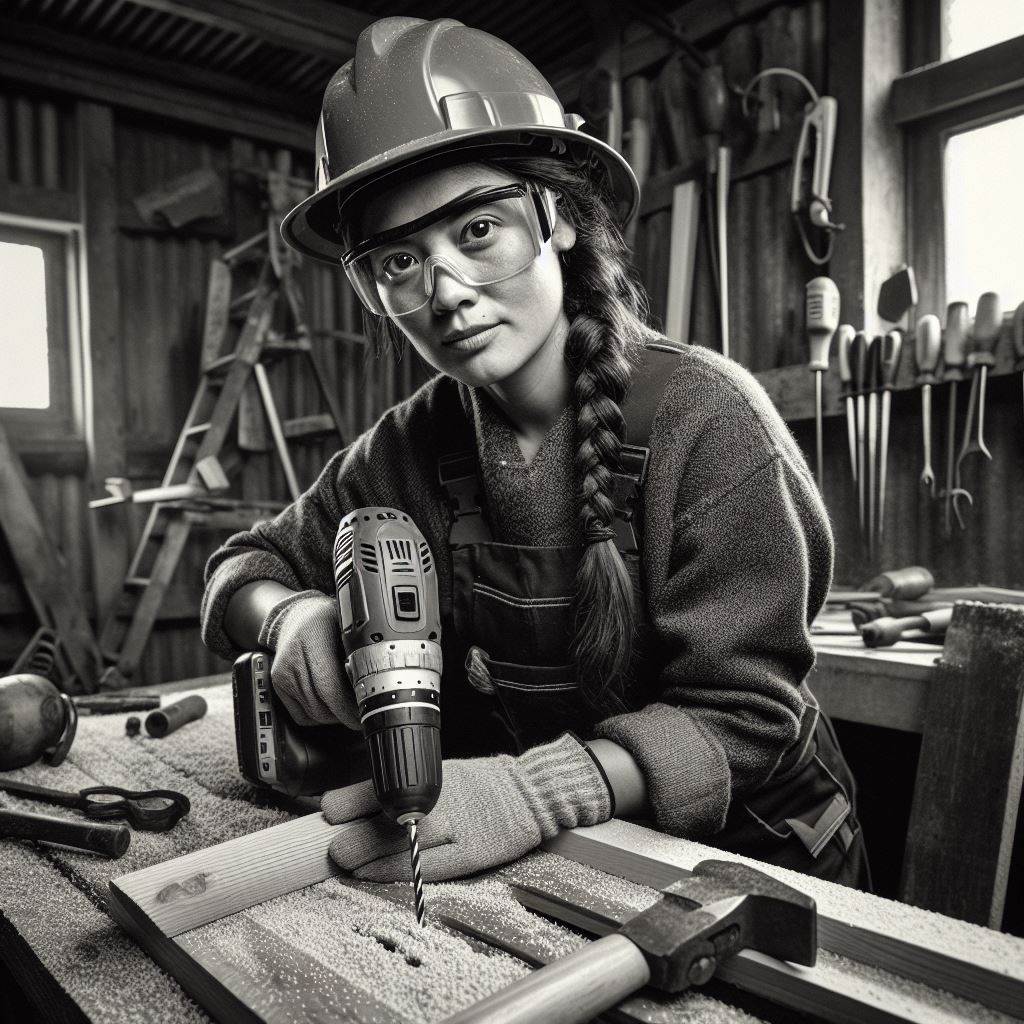Introduction
In New Zealand’s carpentry industry, ensuring health and safety is paramount due to daily risks. lets discuss on carpenter health and safety.
Carpenters face hazards, necessitating rigorous safety measures.
This section explores key health and safety aspects for NZ carpenters. Safety prioritization is crucial, from risk comprehension to preventive measures.
Physical exertion and skill demand health considerations in carpentry. Handling power tools, working at heights, and dealing with heavy materials pose risks.
Accidents underscore the need for comprehensive safety protocols and training. Carpenters must address long-term health concerns, including respiratory issues.
New Zealand’s regulations guide carpenters in creating secure work environments. Compliance is mandatory to avoid penalties and protect workers’ well-being.
Employers ensure proper safety equipment and training for carpenters. Promoting a safety culture prioritizes health in the workplace.
Technological advancements necessitate ongoing safety education for carpenters. This section discusses specific safety measures like tool usage and hazard identification.
Empowering carpenters with knowledge enhances well-being and job satisfaction. Mental health considerations, crucial due to job demands, include stress and fatigue management.
Supportive work environments and open communication foster mental well-being. This section aims to comprehensively address health and safety in NZ’s carpentry industry.
Embracing proactive approaches helps mitigate risks and fosters a safe workplace.
The Health and Safety at Work Act 2015 —
The Health and Safety at Work Act 2015 is an important piece of legislation in New Zealand that aims to protect the health and safety of workers, including carpenters, in the workplace.
It sets out a framework for managing health and safety risks and ensuring that everyone has a safe working environment.
Explanation of the legislation and its purpose:
- The Health and Safety at Work Act 2015 was introduced to improve workplace health and safety standards.
- The Act provides a legal framework that promotes a proactive approach to identifying and managing workplace hazards.
- Its primary purpose is to prevent harm, injury, and illness by putting the health and safety of workers and others at the forefront.
- Under this legislation, employers have a duty to ensure the health and safety of their workers and anyone else affected by their work.
- Workers also have a duty to take reasonable care of their own health and safety and that of others who may be affected by their actions.
- The Act applies to all workplaces, including construction sites where carpenters often work.
Key provisions that apply to carpenters
- Carpenters must follow the general principles of health and safety as outlined in the Act.
- They need to identify and manage hazards in their work, such as working at heights or handling hazardous substances.
- The Act requires carpenters to use appropriate safety equipment and follow safe work practices.
- Employers are responsible for providing training, supervision, and information about potential hazards to carpenters.
- There is a duty to notify WorkSafe New Zealand of serious harm incidents or dangerous occurrences.
- Carpenters are entitled to participate in decisions regarding health and safety matters that affect them.
Importance of complying with the Act
Complying with the Health and Safety at Work Act 2015 is crucial for carpenters to ensure their own safety and the safety of others. By following the Act’s provisions
- Carpenters can reduce the risk of accidents, injuries, and work-related illnesses.
- Compliance enhances the reputation of carpenters and their employers as responsible and safe workplaces.
- Non-compliance can result in penalties, fines, and legal action, which can have serious consequences for carpenters and their businesses.
- By complying with the Act, carpenters contribute to building a culture of safety in the construction industry.
- The Act emphasizes the importance of regular monitoring, reporting, and reviewing of health and safety practices.
Basically, the Health and Safety at Work Act 2015 plays a crucial role in ensuring the health and safety of carpenters and all workers in New Zealand.
By understanding and complying with the Act’s provisions, carpenters can create a safer working environment, reduce accidents and injuries, and contribute to a positive safety culture.
Common Occupational Hazards for Carpenters:
Carpentry is a skilled trade that involves constructing, repairing, and installing various wooden structures.
However, like any other occupation, carpenters are exposed to several hazards that can affect their health and safety.
In this section, we will discuss the common occupational hazards that carpenters face on a regular basis.
Discussion of physical risks such as falls from heights, slips/trips, and musculoskeletal disorders
One of the most prevalent risks for carpenters is the potential for falls from heights. Due to the nature of their work, carpenters often have to climb ladders, scaffolds, or work on elevated platforms.
Without proper precautions, this can lead to serious injuries or even fatalities.
To minimize this risk, it is essential for carpenters to wear appropriate fall protection equipment such as harnesses and safety harnesses.
Exposure to hazardous substances such as asbestos and lead
Slips and trips are another common hazard for carpenters. The construction site can be a chaotic environment, often with debris, tools, and materials scattered around.
Carpenters need to be vigilant and ensure that walkways are clear and free from any hazards that could cause them to slip or trip. Wearing appropriate non-slip footwear can also help to prevent accidents.
Musculoskeletal disorders (MSDs) are a significant concern for carpenters due to the physically demanding nature of their work.
Repetitive tasks, awkward postures, heavy lifting, and vibrations from power tools can all contribute to MSDs such as back pain, tendonitis, and carpal tunnel syndrome.
Carpenters should be trained in proper lifting techniques, take regular breaks, and use ergonomic tools to reduce the risk of developing such disorders.
In addition to physical risks, carpenters are also exposed to hazardous substances in their line of work. Asbestos, a known carcinogen, may be present in old buildings or structures that carpenters work on.
Exposure to asbestos fibers can lead to serious health conditions such as mesothelioma and lung cancer.
Carpenters must wear suitable personal protective equipment, including respirators, and follow proper containment and disposal procedures when dealing with asbestos.
Lead is another hazardous substance that carpenters may encounter, especially when working on older buildings.
Lead-based paint, which was commonly used in the past, can pose a health risk if it is disturbed or when sanding or scraping it.
Carpenters must take precautions to prevent lead dust exposure by wearing appropriate respiratory protection and following safe work practices.
Use of power tools, machinery, and electrical equipment
The use of power tools, machinery, and electrical equipment is an integral part of a carpenter’s job. However, these tools can also pose risks if not used properly.
Carpenters should receive training on the safe operation and maintenance of these tools, including knowledge of the associated hazards.
Regular inspections, proper guarding, and the use of personal protective equipment can help minimize the risk of accidents or injuries.
Generally, carpentry is a rewarding profession, but it comes with its own set of hazards. Carpenters face physical risks like falls, slips, and musculoskeletal disorders.
They are also exposed to hazardous substances such as asbestos and lead.
Proper training, adherence to safety protocols, and the use of personal protective equipment are crucial in ensuring the health and safety of carpenters in New Zealand.
Read: Carpentry 101: A Guide for Kiwi Beginners
Preventive Measures for Carpenter’s Safety
When it comes to the health and safety of carpenters in New Zealand, there are several preventive measures that can be implemented to ensure their well-being. These measures include:
Importance of Risk Assessments and Safety Planning
- Risk assessments should be conducted regularly to identify potential hazards in the carpentry workplace.
- Safety planning should be done to develop strategies for mitigating risks and creating a safer working environment.
- Identifying and addressing potential risks can help prevent accidents and injuries.
Use of Personal Protective Equipment (PPE)
- Wearing appropriate PPE is crucial for carpenters to protect themselves from potential hazards.
- Gloves can be used to protect hands from cuts and injuries while handling tools and materials.
- Safety glasses should be worn to shield the eyes from flying debris and dust particles.
- Helmets are essential to protect the head from falling objects and potential head injuries.
Training and Education on Proper Tool Handling, Lifting Techniques, and Safe Work Practices
- Proper training should be provided to carpenters on how to handle tools safely and effectively.
- They should be educated on the correct use of power tools to minimize the risk of accidents.
- Carpenters should be trained on proper lifting techniques to avoid strains and back injuries.
- Knowledge and understanding of safe work practices are essential in preventing accidents and maintaining a healthy work environment.
Implementing these preventive measures can significantly improve the health and safety of carpenters in New Zealand.
Regular risk assessments and safety planning ensure that potential hazards are identified and addressed before accidents occur.
The use of personal protective equipment, such as gloves, safety glasses, and helmets, provides essential protection against various hazards.
Training and education on proper tool handling, lifting techniques, and safe work practices equip carpenters with the necessary skills and knowledge to perform their tasks safely.
Personalized Career Consulting
Unlock your potential with expert career advice tailored to your goals. Get personalized guidance and actionable steps toward your dream career in New Zealand.
Get StartedIt is the responsibility of employers and supervisors to enforce these preventive measures and provide a safe working environment for carpenters.
Regular safety inspections, proper maintenance of tools and equipment, and the implementation of safety protocols are crucial in ensuring the ongoing safety of carpenters.
Additionally, carpenters themselves should actively participate in promoting their own safety by following the established safety guidelines and reporting any potential risks or hazards they observe.
By prioritizing preventive measures, carpenters can perform their tasks with confidence and minimize the risk of accidents and injuries.
Ultimately, a safe and healthy working environment benefits not only the carpenters but also the overall productivity and success of the construction industry in New Zealand.
Read: Top Carpentry Courses in New Zealand
Role of Employers and Workplaces in Carpenter’s Health and Safety in NZ
Ensuring the safety and well-being of carpenters is a crucial responsibility of employers and workplaces in New Zealand.
They play a vital role in providing a safe working environment and maintaining the health of their employees.
Employer’s responsibility in providing a safe working environment
- It is the duty of the employer to create a safe and healthy work environment for carpenters.
- Employers must identify and eliminate any potential hazards that may pose a threat to the carpenters’ safety.
- Regular risk assessments should be conducted to assess and control workplace hazards.
- Proper safety measures and protocols must be implemented to prevent accidents and injuries.
- Employers should provide the necessary safety equipment and tools to ensure the carpenters’ well-being.
Regular maintenance and inspection of tools and equipment
- Tools and equipment used by carpenters need regular maintenance and inspection to ensure their proper functioning.
- Employers should establish a system for regular inspections and maintenance of tools and equipment.
- Defective or damaged tools should be immediately repaired or replaced to avoid accidents.
- Carpenters should be trained on how to properly use and maintain their tools to maximize safety.
- Regular maintenance and inspection help identify potential hazards and prevent accidents.
Training programs and resources for employees to enhance their safety knowledge
- Employers should provide adequate training programs to educate carpenters on safety procedures and protocols.
- Regular safety training sessions should be conducted to enhance the safety knowledge of the carpenters.
- Employers should provide resources such as safety manuals and guidelines to promote a safety-conscious work environment.
- Carpenters should be encouraged to actively participate in safety training programs and take responsibility for their own well-being.
- Ongoing training ensures that carpenters are up-to-date with the latest safety measures and practices.
In general, employers and workplaces play a crucial role in ensuring the health and safety of carpenters in New Zealand.
By providing a safe working environment, maintaining tools and equipment, and offering training programs, employers contribute to creating a safe and secure work environment for carpenters.
It is essential for employers to prioritize the well-being of their employees and promote a safety-conscious culture within the carpentry industry.
Read: NZ Carpentry: Skills and Tools Needed

Health and Safety Policies and Procedures
Explanation of the Importance of Having Clear Policies and Procedures in Place
- Clear policies and procedures ensure that carpenters are aware of their responsibilities regarding health and safety.
- They provide guidelines for safe work practices, reducing the risk of accidents and injuries.
- Policies and procedures create a standard of compliance, promoting consistency and accountability.
- Having clear guidelines in place also helps in the event of legal disputes or insurance claims.
Overview of Specific Policies Related to Carpenters’ Safety
- PPE (Personal Protective Equipment): Carpenters must wear appropriate gear, such as hard hats and safety glasses.
- Working at Heights: Procedures for using scaffolding, ladders, and fall protection systems are outlined.
- Tool and Equipment Safety: Policies regarding the maintenance and proper use of tools are established.
- Hazardous Substances: Guidelines for handling and storing chemicals, paints, and solvents are provided.
- Electrical Safety: Carpenters must understand safe practices when working with electricity and power tools.
- Fire Safety: Procedures for preventing and responding to fires in construction sites are implemented.
- Emergency Preparedness: Evacuation plans and procedures for medical emergencies are communicated.
Importance of Effective Communication and Reporting of Incidents or Near Misses
- Open communication ensures that any potential hazards or risks are identified and addressed promptly.
- Reporting incidents or near misses allows for investigations to determine the root causes and prevent future occurrences.
- Timely reporting enables management to provide necessary support and resources for carpenters’ well-being.
- Sharing information on incidents helps raise awareness and prevent similar accidents within the industry.
- Cultivating a culture of reporting encourages collaboration and continuous improvement in health and safety practices.
- Effective communication and reporting contribute to a safer working environment and better overall carpenter’s health.
In essence, having clear health and safety policies and procedures in place is essential for carpenters’ well-being.
These guidelines promote safe work practices, provide consistency, and ensure compliance.
Specific policies related to carpenters’ safety cover various aspects, including personal protective equipment, working at heights, tool and equipment safety, hazardous substances, electrical safety, fire safety, and emergency preparedness.
Effective communication and reporting of incidents or near misses play a crucial role in preventing accidents and continuously improving health and safety practices.
By fostering a culture of reporting, carpenters can work in a safer environment and maintain their health for years to come.
Read: Carpenter Apprenticeships in NZ Explained
Organizations and Resources for Carpenter’s Health and Safety
When it comes to the health and safety of carpenters in New Zealand, there are several organizations and resources available to provide guidance and support.
This section will introduce government agencies involved in occupational health and safety regulation, discuss industry-specific organizations, and provide an overview of available resources.
Government Agencies
- WorkSafe New Zealand: As the primary government agency, WorkSafe is responsible for regulating and enforcing health and safety in workplaces across the country.
- Ministry of Business, Innovation and Employment (MBIE): MBIE plays a crucial role in setting policies and regulations related to workplace health and safety.
- ACC (Accident Compensation Corporation): ACC provides support and compensation for workers who suffer work-related injuries or illnesses.
Industry-Specific Organizations
- Registered Master Builders Association (RMBA): RMBA offers resources and guidance specific to the construction industry, including health and safety best practices for carpenters.
- Building and Construction Industry Training Organisation (BCITO): BCITO provides training and apprenticeships for carpenters, ensuring they are equipped with the knowledge and skills necessary to work safely.
- New Zealand Certified Builders Association (NZCB): NZCB offers support and networking opportunities for carpenters, promoting safe and sustainable practices in the industry.
Available Resources
There are various resources available to carpenters in New Zealand to enhance their health and safety practices.
- Worker Health and Safety Courses: Carpenters can enroll in courses offered by organizations like Site Safe to improve their understanding of health and safety regulations and learn how to identify hazards.
- Guides and Manuals: Both WorkSafe and industry-specific organizations provide comprehensive guides and manuals on various health and safety topics, including safe working practices and the correct use of tools and equipment.
- Online Platforms: Websites, forums, and online communities dedicated to carpentry and workplace health and safety allow carpenters to access information, seek advice, and share experiences with others in their field.
- Health and Safety Representatives: Carpenters can elect or become health and safety representatives within their workplaces.
These representatives ensure that management addresses health and safety concerns by liaising between workers and management. - Workplace Assessments: Regular workplace assessments conducted by organizations like NZCB or independent health and safety professionals help identify potential risks and provide recommendations for improvement.
Essentially, carpenters in New Zealand have access to a range of organizations and resources dedicated to their health and safety.
Government agencies such as WorkSafe and MBIE play a crucial role in regulation and policy-making, while industry-specific organizations like RMBA and BCITO offer guidance and training.
Meanwhile, resources such as worker health and safety courses, guides and manuals, online platforms, health and safety representatives, and workplace assessments further contribute to ensuring the well-being of carpenters in their workplace.
Conclusion
In closing, prioritizing health and safety is paramount for carpenters in New Zealand’s construction industry.
Rigorous safety measures reduce risks. Compliance with regulations ensures worker well-being. Employers play a pivotal role in providing proper training and equipment.
Promoting a safety culture fosters a secure work environment. Ongoing education on new tools and techniques enhances safety.
Mental health considerations are crucial. Creating a supportive environment is essential. This section underscores the importance of health and safety in carpentry.
Embracing proactive measures safeguards well-being. Let’s prioritize health and safety in NZ’s carpentry industry.




